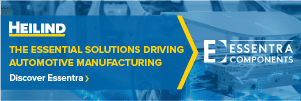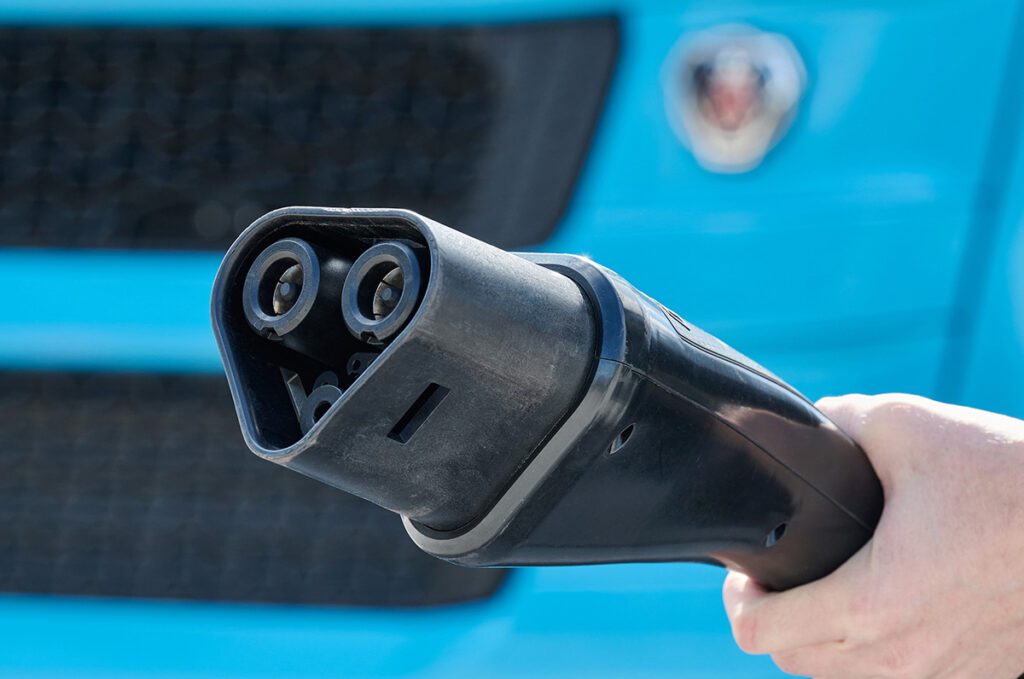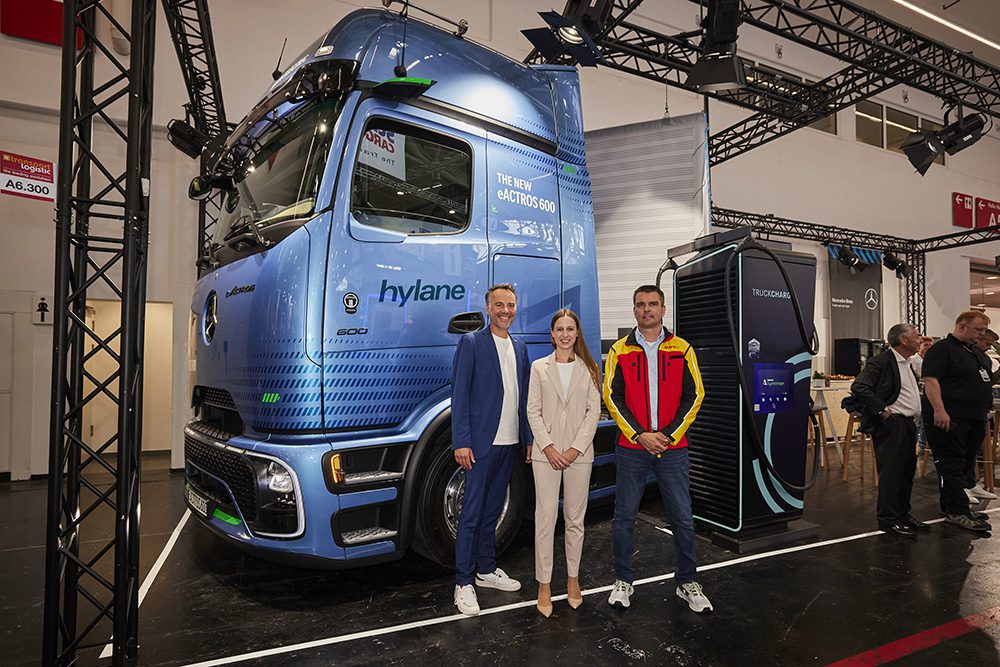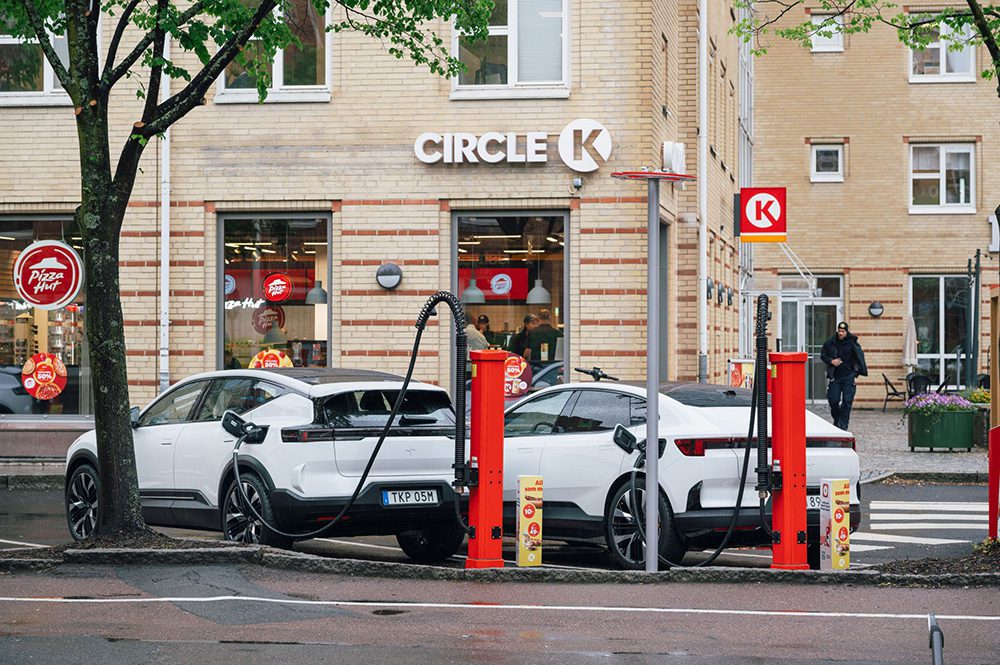Nikhil Bharadwaj was sitting in his office, pondering his personal mission in life: to solve climate change “without bothering people.” After graduating as an energy engineer from Penn State University, that mission brought him to California, where he led the Transportation Innovation Team for Schneider Electric’s Energy and Sustainability Services department.
For the umpteenth time that day, Bharadwaj noticed a colleague looking out the window, as if searching for something. Inquiring about the odd behavior, Bharadwaj learned that his boss was scouting the parking lot for available EV chargers so he could plug in his car.
“That’s when the light bulb went on,” Bharadwaj reflected. He realized that, despite the great strides being made towards EV adoption, charging continued to be a suboptimal experience for many drivers. “I’d see all these Teslas self-parking and changing lanes. But when it came to the charging experience, people were looking out of windows, trying to see if a charger was available.”
Being unable to find a charger at work is annoying, but being unable to find a charger at home is even worse. EV drivers who live in apartment buildings are at the whim of building owners when it comes to access to EV charging. “Almost 57% of Americans do not have a private driveway, and that is something that needs to be addressed for us to all move to a 100% electric future,” Bharadwaj explained.
Bharadwaj thought he could do better. He shared his vision with investment banker Alexander Isaacson, a fellow Penn State graduate whom Bharadwaj had met, fittingly enough, at an entrepreneurship class. The two knew they needed an individual with deep software development experience to bring the entire platform together. That’s when Gaurav Chauhan, a seasoned full-stack software engineer, traveled 200+ miles to meet the team in Nikhil’s dorm room and was immediately sold on the vision. Together, the three founded Zeal, a company that hopes to fix the user experience of EV charging.
Charging communities and the loads they create
Zeal started by developing a scheduling engine that creates charging sessions of varying intervals, which are posted on a rolling two-day calendar. Instead of sticking their heads out of windows to hunt for an open charger, drivers join a self-managed “charging community” and reserve their charging sessions in advance, reducing both anxiety and friction among users competing for a limited number of chargers. This is the basis of Zeal’s Charging Management Platform or CMP, which makes EV charging at workplaces and especially at residential multi-unit dwellings (MUDs) like apartments and condominiums as orderly and automated as possible.
Bharadwaj and Isaacson soon realized the CMP could provide an additional service. EV charging requires a lot of energy, but there’s only so much energy available, and it comes at a cost. Draw too much current and you can blow a fuse; draw too much current during peak demand times and you can blow your budget. To avoid both of these problems, most charging providers offer services that manage the EV charging load on the building’s electrical system.
There are several load management techniques, but they all share the same goal: limiting the current used for EV charging to prevent electrical system overload and utility peak demand charges. Most charging networks use a technique called load balancing, which divides a building’s current limit – say 100 amps – evenly among every charger that is actively charging a vehicle. If there are ten active chargers, each would be limited to 10 A.
Another method, load switching, only activates the number of chargers that corresponds to the electrical system’s current limit for a short period of time and then switches those chargers off and activates a different set of chargers. Using the same 10 chargers, each with 32 A of output, three stations would charge for 10 to 20 minutes, and then those chargers would be turned off and another three chargers would get their turn, and so on until every vehicle battery is fully charged.
While load balancing and load switching make property owners happy by keeping energy costs to a minimum, they can be a major inconvenience for EV drivers. Imagine your frustration after plugging in your EV for several hours, only to return to a half-charged battery because the charger was artificially throttled to a mere trickle of current.
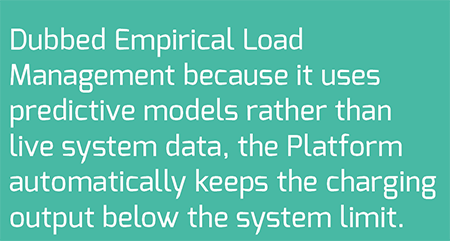
Bharadwaj and Isaacson recognized this problem and developed a new load management technology that benefits drivers and property owners alike. Since the CMP knows the make and model of each EV and charger in the community, it calculates the output of each charging session when it is reserved, and then deducts that amount of output from the total available output. Dubbed Empirical Load Management because it uses predictive models rather than live system data, the platform automatically keeps the charging output below the system limit. Now both owners and drivers are happy.
The Zeal founders knew that many MUD owners, especially owners of smaller complexes with fewer than 20 units – which make up over half the apartment stock in the US – were not impressed with the high cost and low return on investment of current EV charging systems. “We created predictive algorithms that use advanced machine learning to know exactly when a building is going to hit peak capacity,” Isaacson explained. “We leverage this data to shape our reservation app in such a way that ensures drivers gain a 100% charge while the building still pays the lowest-cost rate plan for electricity.” Bharadwaj and Isaacson believe that driving system costs down and improving apartment owners’ ROI is the key to unlocking the biggest segment of the MUD market.
The Airbnb of private EV charging
Charged has come across several software companies that liken their platforms to the Airbnb of EV charging, including Zeal with its mutual benefit to both drivers and charging providers. What sets Zeal apart is its focus on private, shared communities such as office buildings and apartments where it can offer EV charging to tenants and earn income from the service. EV drivers can schedule charging sessions to ensure they always have access to the charge they need.
“We created a two-sided marketplace, where the charger host can earn passive income streamlining chargers on our platform. And on the other side, drivers gain an enjoyable and reliable charging experience at an affordable rate,” Isaacson said.
The Zeal Charge mobile app includes several features to provide a premium charging experience for drivers, without requiring oversight from providers. As Isaacson explains it, the goal is for providers to be able to “put their chargers on autopilot.”
For instance, the Zeal app includes a chat room where drivers can communicate directly with one another. A driver at the end of her scheduled time slot can notify the next driver that she’ll be five minutes late to move her vehicle. “We want to enhance charging communities and virtually eliminate local staff involvement,” Isaacson said.
The app also has a reporting function so that drivers can flag problematic chargers. The reports are sent to Zeal and the building managers and can also be sent directly to third-party maintenance providers to notify them that the chargers need repair. The platform also includes measures to ensure that only the drivers who are scheduled for a session can access their reserved charger.
For buildings with existing chargers, one of the main benefits of Zeal is its ease of adoption, according to Isaacson. There’s no need to replace existing charging equipment.
“We’re the only software right now that can integrate with any charger model to upgrade its functionality, similar to an iOS update for an iPhone,” Isaacson said.
Zeal collects a building’s utility information in order to customize its algorithms for the building’s charging requirements. Zeal then provides a dashboard where the charging providers can monitor their energy usage and charging revenue in real-time.

Hitting the blue ocean
“The issue is drivers switch to electric when chargers are readily available, but buildings tend to only install chargers when EV drivers populate their property, so it creates this inefficient marketplace that’s dependent on the early adopters,” said Isaacson. “That’s why we made it our mission to hit the broader blue ocean by making chargers a profitable, sustainable, and practical asset to own in order to encourage buildings to expand EV charging infrastructure.”
Today, Zeal is still in its infancy, and the company is primarily focused on piloting its technology. One such pilot project was with Bharadwaj’s former employer, Schneider Electric.
“They had two electric car chargers shared by 16 drivers, and the building could not take any more chargers without upgrading their service panel, which can be upwards of $12,000,” Isaacson said. “So we came in and nearly doubled the utilization of the chargers, while putting more e-miles on the road to substantially improve the building’s carbon impact.”
Zeal has also piloted programs with the California Department of Transportation, EV charger manufacturer ClipperCreek, and multiple property management groups. The platform is currently live in 7 cities, but Zeal has grand plans to expand in the next year.
More recently, Zeal was recognized as a Startup Finalist at CoMotion LA and awarded a round trip to the UK to meet with London city officials and the Department of Transportation to discuss long-term innovation plans for the future of electric mobility.
This article appeared in Charged Issue 46 – November/December 2019 – Subscribe now.





